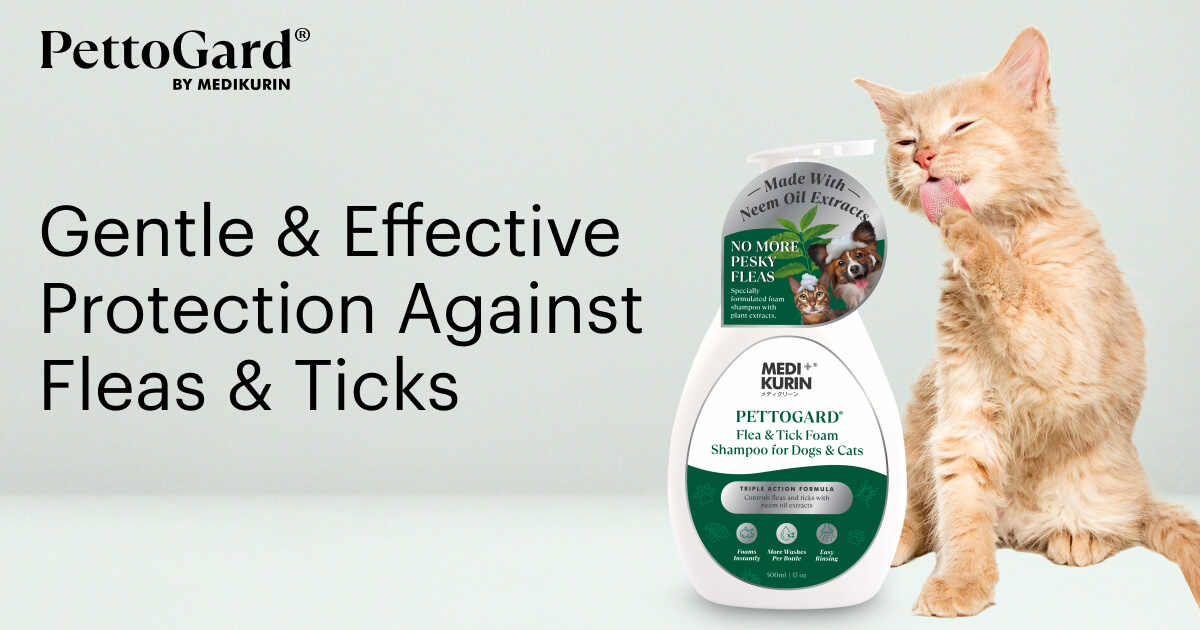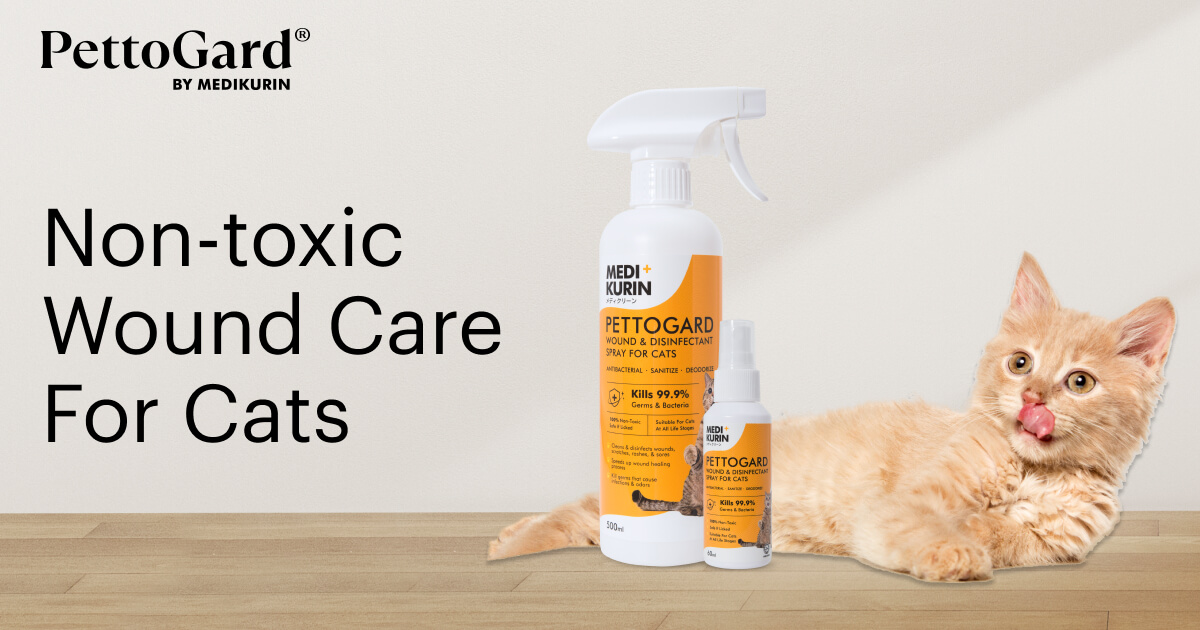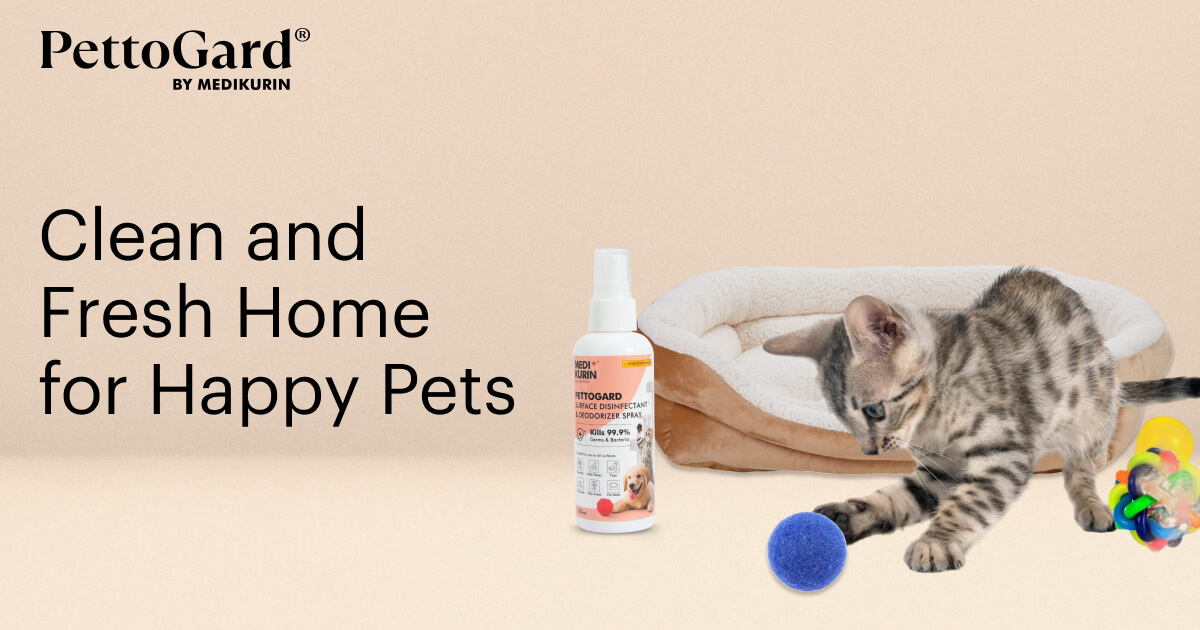Easy to spot but difficult to diagnose, fungal infections can affect cats of any age and breed.
Fungal infection is a type of skin infection in cats, and the symptoms typically manifest as dry or crusty skin, redness on the skin, a sour scent, pustules, hair loss, and itchiness. Sometimes, fungal infections can also be attributed to other skin conditions your cat may be suffering from.
Physically active cats, outdoor cats, home cats, kittens, adopted strays, and purebreds may experience fungal infections throughout their lifetime, but cats that are ill or suffer from immune deficiency diseases are especially vulnerable to fungus attacks. While the signs are easy to spot, fungal infections in cats are difficult to diagnose, and determining the cause of the infection can be quite a challenge as it can happen due to many factors.
Common Fungal Infections In Cats

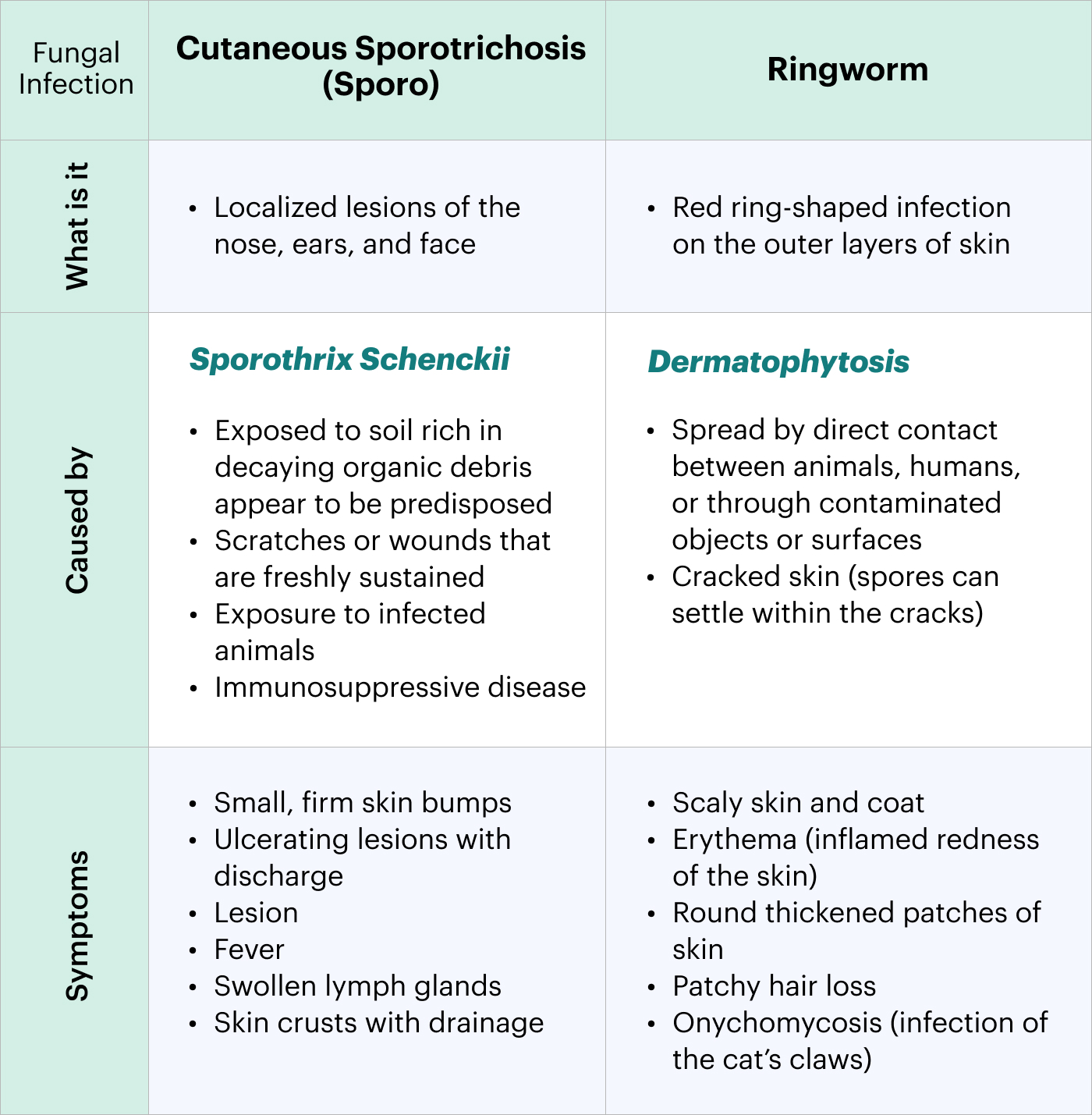
1. Cryptococcosis
This fungal infection is sustained when your pet cat inhales the spores from a type of fungus – Cryptococcus neoforman, that are commonly grown in soil, decaying wood, or pigeon droppings. These spores can also enter your pet cat’s skin through an open wound. The danger of these spores is the risk of spreading across your cat’s respiratory tract through its nasal cavity, eventually affecting its central nervous system, eyes, and skin, or spread to your cat’s lungs by growing into the surrounding organs’ tissues.
2. Candidiasis
This fungal infection primarily affects your cat’s skin, and the infection occurs when there is an overabundance of the fungus Candida albicans. The infection may also be related to other upper respiratory diseases, intestinal and bladder diseases, and eye lesions in your pet cat. It is most commonly characterized by visible skin sores on your pet cat’s ears or genital area, or other parts of the body.
3. Malassezia Yeast
This particular yeast, although is said to be found among other microorganisms that are naturally part of the skin’s microbiome, is known to cause diseases when it reproduces uncontrollably – often due to a variety of reasons as detailed in the chart above. The excess yeast exploits cats that are sick or weak and sometimes invades even the healthiest of cats due to its parasitic nature. The Malassezia yeast mostly affects the skin, but occasionally, there have been many reports of the yeast affecting other parts of the cat’s body such as the respiratory tract.
4. Cutaneous Sporotrichosis
The main culprit behind the potentially fatal fungal disease is the organism Sporothrix Schenckii, whose natural habitat includes timber, vegetation, and soil. Both cats and humans are susceptible to Cutaneous Sporotrichosis infections as the spores can easily enter the body through open wounds and sores, and symptoms typically manifest as localized lesions on the nose, ears, face, and other parts of the body.
5. Ringworm
Also known as Dermatophytosis, the ringworm is a highly contagious fungal infection that affects your pet cat’s skin. Like its namesake, ringworm infections have the appearance of a red ring-shaped infection on the outer layers of the skin – and can be easily spread to other pets and even people. Ringworm infections can be spread through touch; the fungus can be attached to and transferred through the skin, fur, and nails. Cats of all ages can contract a ringworm infection, with kittens being the most vulnerable to Dermatophytosis.
The 5 Ways To Prevent Fungal Infections In Your Cat
Prevention is better than cure. If you’re a new cat owner looking for ways to protect your furry friend from fungal infection in cats, here is your essential checklist!
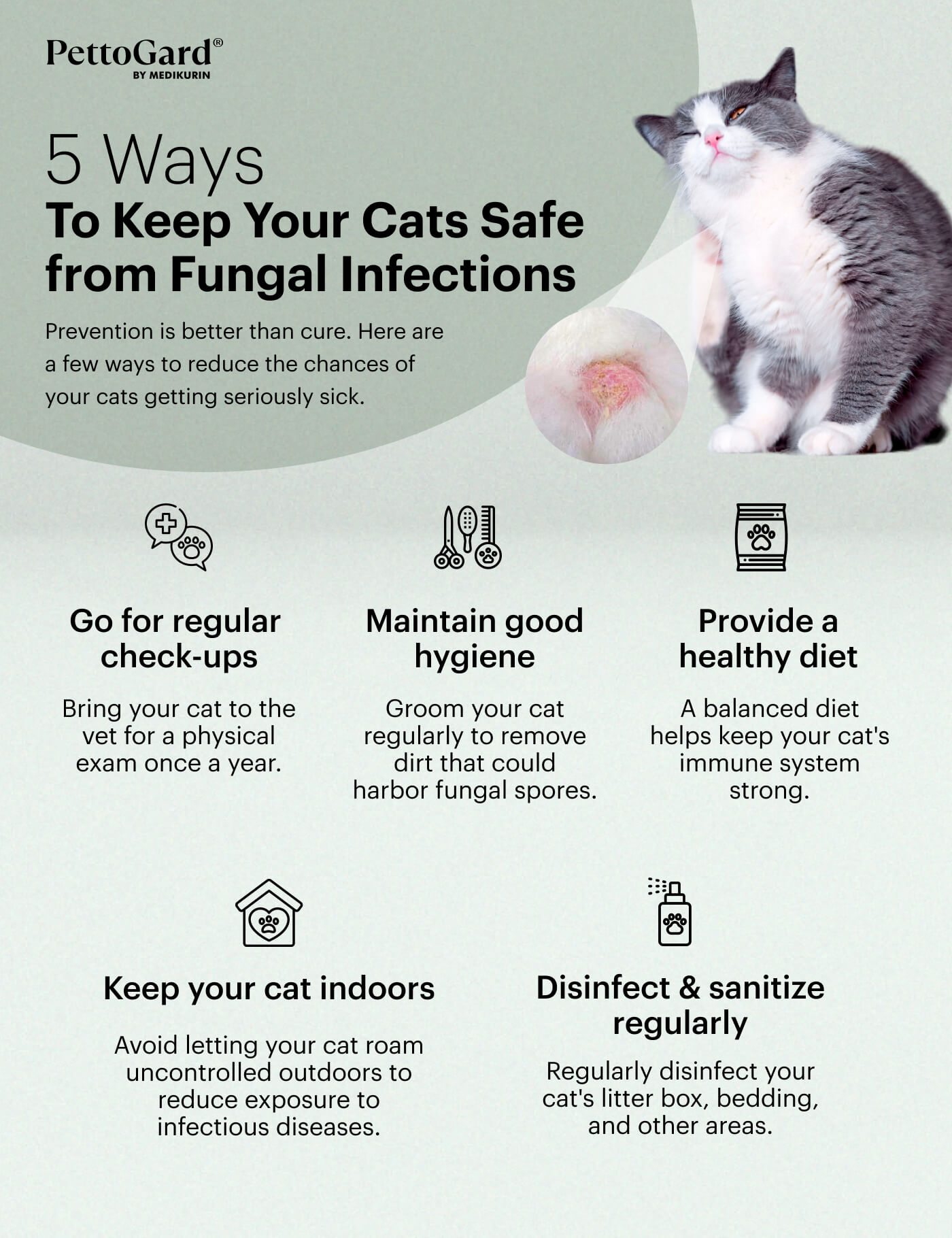
- Visit the veterinary clinic regularly to get your cat checked. Once a year is recommended.
- Your cat usually grooms itself with its tongue, but it may not be good enough to keep fungus and spores away – in fact, your pet cat could accidentally ingest these harmful microorganisms. Remember to groom and bathe your cat to remove dirt that potentially harbors fungal spores.
- Provide your cat with a healthy and balanced diet to keep its immune system strong – a core strategy to fight and suppress fungal infections naturally.
- Keep your pet cat indoors to minimize contact with diseases and parasites from the outside world.
- Apply sanitizers and deodorant spray on your pet cat’s most frequently used items; feeding bowls, cages, bedding, and toys – to eliminate harmful or odor-causing bacteria.
Treatment & Management
The most common treatment for fungal infections is a veterinary-prescribed anti-fungal medication. If your pet cat is a long-haired breed, you may trim down its coat or remove the fur around its wounds to tackle the fungal infection more effectively. Lesser fur means lesser obstruction for the medication to make contact with the infected wound.
On top of medication, cat owners are also advised to pair the treatment with an anti-fungal shampoo for cats. We highly recommend MEDIKURIN’s PettoGard® Hypoallergenic Foam Shampoo for Dogs & Cats, which is formulated with natural ingredients targeting pets with sensitive skin or pets healing from skin infections. The gentle shampoo does not dry out your pet cat’s skin, which is paramount in ensuring a smooth-sailing healing journey.
To accelerate your cat’s healing process when dealing with fungal infections, you are also advised to regularly use PettoGard® Antimicrobial Skin Care & Wound Spray for Cats to clean, flush, moisturize, and suppress the spread of infections. The disinfectant spray is formulated with Hypochlorous Acid, a gentle yet effective germ-killing ingredient to ensure pH-balanced skin while eliminating harmful bacteria.
Bear in mind that fungal infections are highly infectious and spread through surface contact. To be 100% sure about eliminating the residual fungus in your home, your should regularly sanitize your pet cat’s frequently-used equipment such as its bedding, brushes, toys, and food bowls – all of which can be effectively cleaned and disinfected with PettoGard® Odor Remover Spray that is safe for cats if licked.
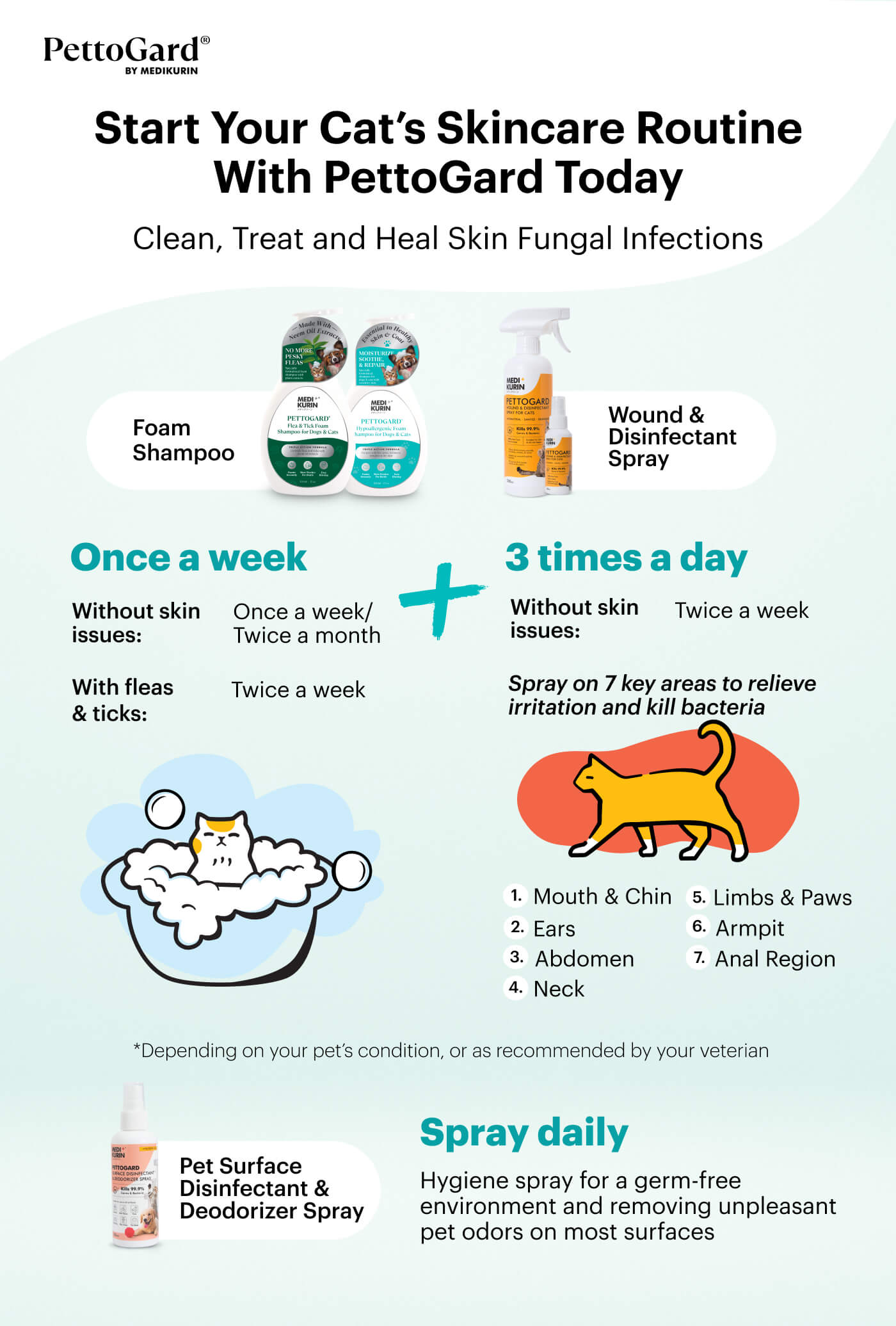
Conclusion
Fungal infections attack pets and other animals with compromised immune systems. Healthy adult cats usually have strong defenses, but it’s important to monitor your pet’s diet, activity, and hygiene to reduce the risk of fungal infection in cats.
If your pet cat is down with a fungus infection, don’t be discouraged! With time and care, most pet cats eventually fully recover from fungal infections. Just remember that consistent efforts in prevention and treatment, combined with a comprehensive environmental sanitization can help you protect your cat friend from further skin troubles.

